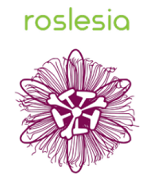“This time next year we’ll have as much passionfruit as there was three years ago in the entire country,” says PP Roets, head of blueberry and passionfruit production at Roslé Farming.
“I don’t think passionfruit has ever been planted at largescale for exports in South Africa. We’re at the stage where we’re exporting fulltime and you can see it almost as a cash crop: I can plant it this year and crop within the same year, a superquick crop. I think Roslesia will probably open people’s eyes to passionfruit.”
The fruit goes predominantly to Europe.
On Roslé farm in Groblersdal, Limpopo Province, which is predicted to already hit 40°C this weekend, they were initially unsure of the success of passionfruit and, specifically, a South African cultivar called Silesia, hence the brand name Roslesia.
“All of the literature says it needs lot of humidity. We planted it in November and December, which is not the best time to plant, close to winter so it reduces growth period. We’ve planted 30ha at Roslé and this coming December, January and February we’ll be taking off a full crop.”
Silesia passionfruit planted on flat top trellises, as it's done in Zimbabwe (photos supplied by Roslesia)
The real focus of their passionfruit lies in Mpumalanga, in White River, where they’ve set up a dedicated packhouse and where there’s 30ha in full production. The second phase is currently planted while the third phase will be completed by August 2023, PP explains.
They’ve been following the Zimbabwean method of flattop trellises, resulting in cleaner fruit, PP says, with five to seven honeybee hives per hectare to ensure pollination of the evanescent passionfruit flower.
Silesia: higher pulp ratioThe Silesia is hardier than the Esther, the mainstay cultivar of South African passionfruit production. It’s a quick grower: in the third month since planting it starts cropping and in their cultivation system there are two harvest cycles before before they remove the plant.
“We play the safe game. We just want to be certain we’re keeping out blocks clean. Infected nursery material hurt the passionfruit industry before, so we have a firewall in place through getting our plant material from two sources where we manage the mother blocks ourselves to ensure top quality, virus-free passionfruit material.”
He continues: “The nice thing of the Silesia is how it’s put together: it’s an eating fruit, not just a processing fruit. It consists of 60% pulp and 40% skin.”
Last year’s processing fruit (fruit that falls to the ground) made up 7 to 8% of the crop and they’re investigating a pulp facility; there is demand for the product.
Buoyant international demand for fresh passionfruit, unlike at homeSouth African passionfruit consumption is moribund and PP says they’ve had many conversations about rejuvenating the passionfruit market through promotional campaigns.
“If you’re buying passionfruit,” he says, referring to the typical South African consumer, “you’re buying it to make cheesecake. You probably won’t be buying it to eat it fresh.”
Internationally, there’s solid demand for fresh passionfruit because of the vitamin C content and its unusually long shelf life, he adds.
Silesia passionfruit go by sea
“I don’t think there’s a supply window or dedicated time slots, we’re trying very hard to achieve twelve months supply of passionfruit. Zimbabwe and South Africa aren’t competition for each other, I don’t think. Our product is suited to sea freight, it definitely has a longer shelf life, and I think that’s where the difference will come in for end consumers: do they want to buy something that will remain fresh in the fridge for three weeks or one with a short shelf life?”
Air freight can be up to US$2 more expensive per carton than sea freight.
 For more information:
For more information:
PP Roets
Roslesia
Tel: +27 82 379 1111
Email: pproets@rosle.co.za
https://www.rosle.co.za/
